Spoiler alert: while I do not believe in narrative spoilers, I spend part of this piece examining the structure (and therefore revealing formalist ‘spoilers’) of The Woman Who Ran and Maggie’s Farm. As such, I recommend it only to be read by those who have seen at least the first film, or those who feel truly unaffected by knowing both films’ structural ins and outs—only because I do not wish to deny anyone the small and surprising pleasures they have to offer.
The Woman Who Ran begins with chickens, and it ends with the ocean. We see both twice. But each time, something is different. There are two musical compositions in the film. Each piece is heard twice, and decidedly lo-fi-demos written and recorded by Hong on his iPhone. The basic structure of the film consists of four conversations: the first two elaborate and the latter two brief. Gam-hee (Kim Min-hee, in her seventh Hong role) visits two friends’ homes, one after the other, followed by a visit to a combination café-cinema where she runs into an old acquaintance and then an old lover.
Exactly who is running and why remains a mystery. It could be that Gam-hee is the one running, either from her past, or her present; her husband is away on a short business trip, and it’s the first time they’ve spent even a day apart in their five years together (approximately the same number of years Hong and Kim have spent together in a slightly ambiguous ‘affair’). “Do you really love your husband?” asks Su-young. “It’s not something you can prove.”
The first conversation (with Young-soon) is bookended by chickens (first seen up close and then from afar), the second (with Su-young) by mountains (zooming out from, then panning left to). By third (with Woo-jin) and fourth (with Mr. Jung) conversation, the equation becomes slightly more complicated: first we see Gam-hee and a man walk away from Su-young’s apartment in opposite directions, then a pan left to mountains. Next, a cut to another zoom-out of mountains, a brief interaction between Woo-jin and an assistant, direct cut to conversation between Woo-jin and Gam-hee, a shot which pans right from the cinema screen to Gam-hee seated in the audience, another chat with Woo-jin, then Gam-hee runs into and briefly speaks to Mr. Jung. Finally, Gam-hee re-enters the cinema, we see her sit down, and the camera pans right to the screen; the circle complete, cinema screen imposed upon cinema screen.
The Woman Who Ran is made up of 28 shots, across 77 minutes.
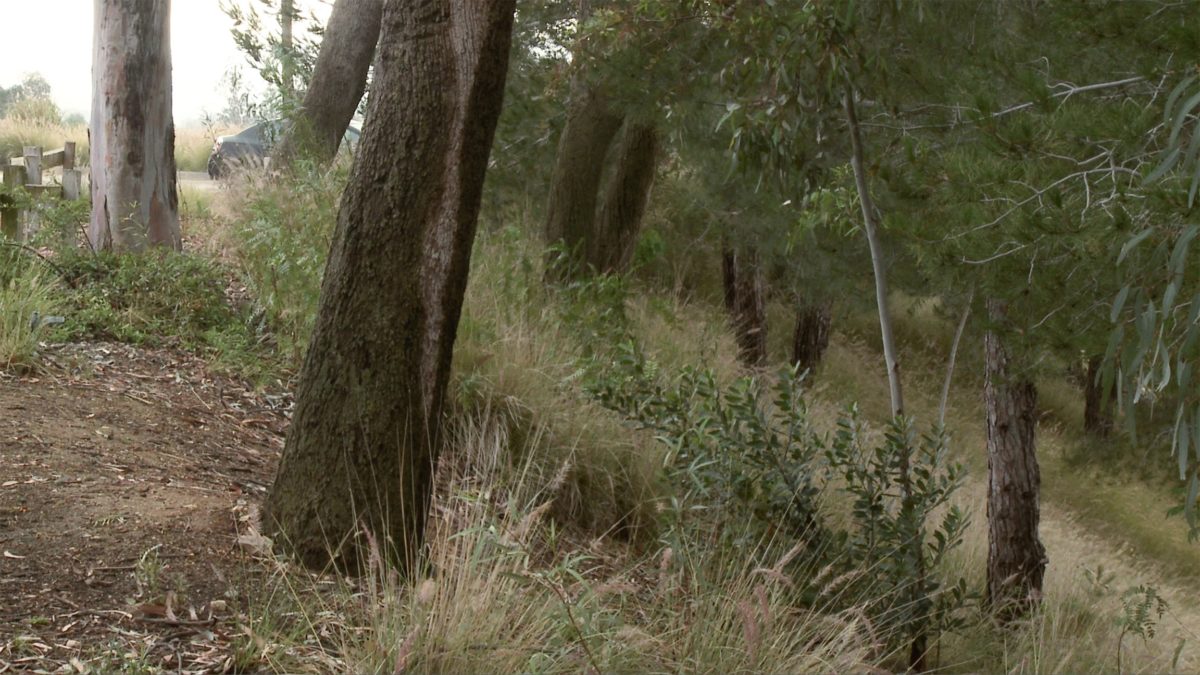
Maggie’s Farm begins in nature and ends in nature infiltrated by man. In the third shot, there is music, seemingly playing inside a car with the windows rolled up, just on the cusp of audibility. It is shot number 12 when the Bob Dylan song returns, clearly audible this time around, as we stare at the wheels of a free-standing blackboard. The song carries into shot 13; lockers. The panel closest to us has graffiti on it, which reads “POO BUTT 2014,” its deliberate inclusion quite possibly my favorite thing about the film. We witness the mundane minutiae of trashcans, footsteps (heard several times, but never seen), automatic sliding doors opening and closing (we only see the shadow of their movement).
Like Hong, James Benning seems with each new title to introduce another (ever-so-slight) variation on a theme, lending greater gravity to whatever tiny changes might appear. This time around it is both filmmakers’ use of music which surprises, in repetitions and in presenting songs which do not meet technical expectations of an ironed-out cinematic soundtrack. In The Woman Who Ran, it’s the use of lo-fi demos; the recorded idea more or less serving as the final track (a reflection of Hong’s overall working method: the first take is often the last). In Maggie’s Farm, Benning plays with how we’re used to hearing music by avoiding non-diegetic sound completely. Benning typically works with direct sound and no music, but the diegetic use of Dylan (and a couple subsequent tunes) in Maggie’s Farm stands in opposition, for example, to his non-diegetic use of ‘Love Itself’ in L. COHEN (2018) and Dylan’s ‘Black Diamond Bay’ in 11×14 (1977).
Yet where Hong mostly follows his intuition, Benning builds with purpose—and both craft works using long takes to emphasize ontological presence on the part of the audience. Both are highly formal filmmakers. Without his sparse cinematographic approach (unashamed use of zoom aside), Hong’s works might fall into paltry sentimentalism. Without his sparse cinematographic approach, Benning’s works…wouldn’t exist? I honestly can’t say I can relate them to anything apart from physically being at the location of their shooting.
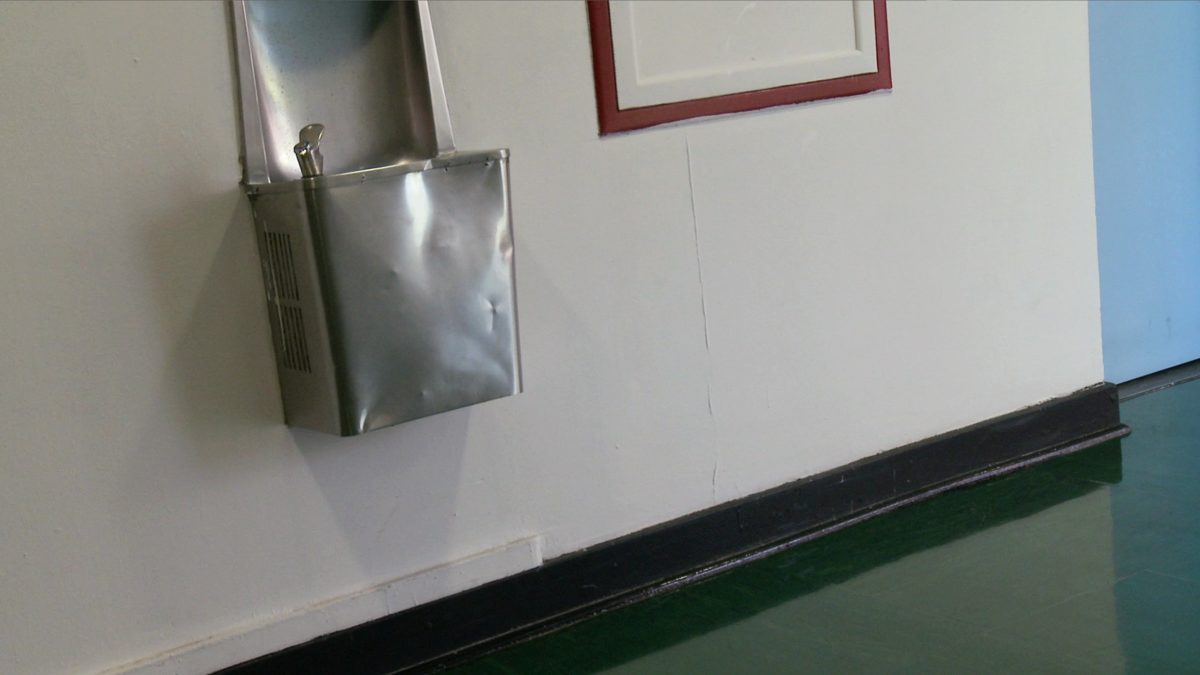
Around shot 19, another song plays. And then in shot 24, ‘The Star Spangled Banner’, followed by the opening remarks of a baseball game. Benning loves baseball. All this with the ‘trashiest’ image of the film to not include literal trash cans—cracked concrete, deteriorating paint, abandoned space. There is an obsession here, especially in the interior shots, with diagonal compositions. When watching Benning’s films, I often imagine them as documents of the present intended for the future; “it used to look like this.” If it seems that my comments simply jump from one element to the next, then consider them a vaguely accurate reflection of Maggie’s Farm.
It’s difficult to parse exactly what Benning is going for here. It’s not complicated, but it’s hardly translucent. Without any supplementary material, one would assume via the title and inclusion of a separate Dylan song that Benning “ain’t gonna work on Maggie’s Farm no more,” and in this case the Maggie’s Farm in question seems to be CalArts—not that it would be possible to identify as much without being told outright (as we are in the synopsis). I had wagered prior to the screening that this was ‘the gist’ of it, and I can’t say I gained an awful lot of insightful depth to add to this idea from actually watching the film. What I did gain was yet another exercise in mindful presence, learning again (and it must be re-learned every day, if not every waking moment) that we must spend enough time in silence to re-learn an appreciation for sound. The film begins with a sequence of several exterior shots. When we first jump to an interior, the sonic sea change is startling; an interior silence so soulless compared to the vibrant hum of the outdoors’ invisible life.
On its surface, this is one of Benning’s ugliest films. I’d suppose that might point to some ugly thoughts about CalArts, or maybe (as heavily suggested by the cracked concrete accompanied by ‘The Star-Spangled Banner’) just some thoughts about the ugly state of a nation that seems to have completely lost touch with its roots and its people. Then again, despite the ugly surfaces, there is a hidden beauty to the compositions. A handful are interesting in a direct way—the first interior shot holding the strongest imprint in my memory —and the rest (of the non-nature material) are largely unimpressive in isolation. What’s interesting about the composition is the continuous (yet slight) turning from shot to shot, focused on diagonal geometry. While watching I had an urge to see the entire film laid out in 25 images, whether still or moving. Such a viewing scenario would certainly make clearer and more appreciable the possible visual patterns and repetitions. Even if there are none per se, it would make for aesthetically interesting viewing.
Maggie’s Farm is made up of approximately 25 shots, across 85 minutes.
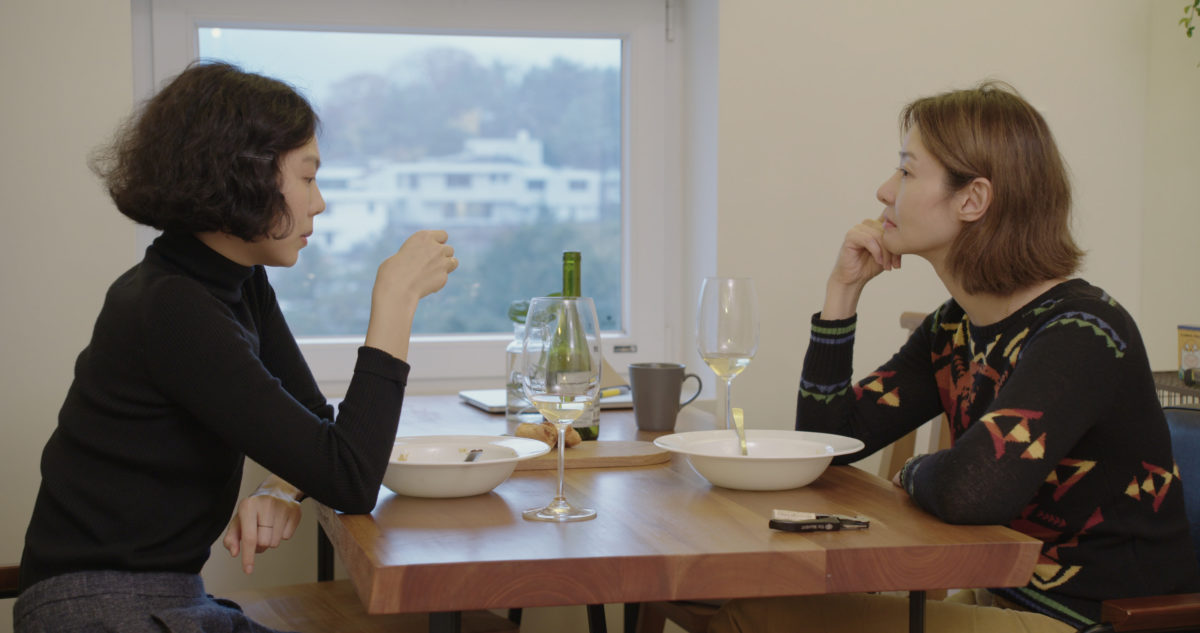
Mirroring repetitions (often with subtle variance) are nothing new to Hong, nor to Benning. If anything, both keep returning to the same ideas; each new film is a fresher draft of the previous to some degree. Hong furthers here his simple and elegant visual syntax; for the most part, there is only one shot per scene, and any ‘editing’ during conversations happens in-camera via zooms (sometimes languid, sometimes quick). Benning takes the opportunity to focus on a particular compositional element (diagonals) and continue to tinker with it in each subsequent shot, adding a compositional cohesion to the thematic ‘progression’.
One key instance of a narratively ‘functional’ long take in The Woman Who Ran occurs when conversation is brought to an end by Gam-hee’s question, “Is something burning?” We realize the ‘something’ really must have been burning for a while, as we’ve seen exactly how long it’s been neglected. In Maggie’s Farm one example of the ‘function’ of duration is its highlighting of the emptiness of the interiors; we sit in one place at a time long enough to hear just how infrequently people pass through the hallways of CalArts (though this is naturally a reflection of Benning’s shooting time decisions). Every work by Benning holds ‘function’ as a result of duration, to varying degrees. The more obvious examples of this are his observations of dramatic changes in light, especially at sunset as in Nightfall (2012) or scorched earth (2016).
When we disagreed about Hong’s previous release, 2018’s Hotel by the River, my former film professor Dr. Yip offered, “It’s clear that he has a system and is repeating it film after film. Watching his films is like seeing a long-time friend; so familiar yet always a pleasure.” A piece of dialog in The Woman Who Ran offers a meta-defense through self-criticism: “If he just repeats himself, how can it be sincere?”
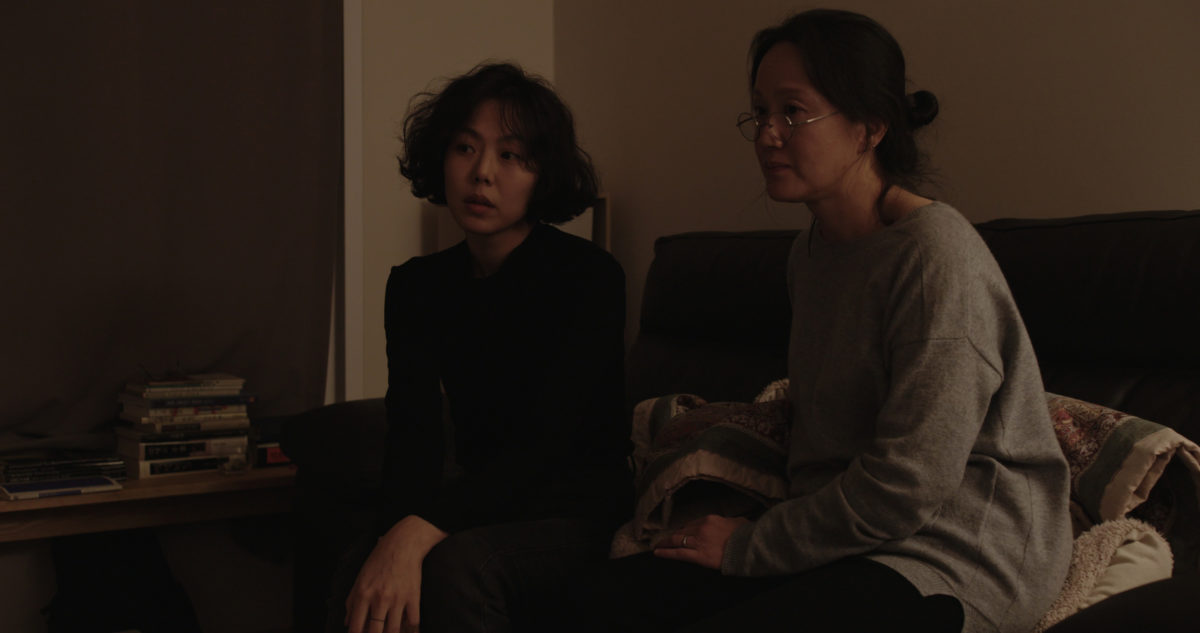
In my own filmmaking practice, I find Hong and Benning’s methods highly practical and helpful, although widely overlooked by filmmakers looking to improve their craft. There seems to be an inane drive to want to create only perfect and complete masterpieces, often with extremely little understanding of why or how one might go about such an arduous task. Some simply wait for the years to pass and wisdom to accumulate. Some break through the gate with resilience and determination, and just crank out whatever commercial prospects they can get their hands on, and still others—like Hong and Benning—patiently draft and re-draft in real time, learning by doing, applying the lessons of one film to the production of the next (even if not in the name of ‘improving’) instead of hiding behind perfectionism which keeps the erstwhile work from public eyes. In the past I would have said Hong has finally perfected his method, but conceptualizing perfection misses the point entirely.
Instead, he seems to have learned over the course of his filmmaking career that the only way to learn how to make films is by making them, and making them thoughtfully without forcing his will upon the work. One might argue that presence is the most important ingredient here: where so many filmmakers get caught up in the whirlwind of industrial filmmaking, distracted, thinking they need more stars or budget, Hong says he tries “to relax and open during this period where I’m supposed to shoot something, and something comes to me instead of [me] going out with purpose. I believe this material is good. I just start working with this material.”
Hong’s films are life-like, certainly, yet it is important to keep in mind the distinction that they are not realistic. His films are not realistic, they are real. So too, are the films of Benning. They are real in the sense that both stay open to the world around them while shooting. The greatest practitioners of the art have revealed their greatest ally time and again; a flexibility and openness to the world, a readiness to incorporate material found on location, to allow accidents or unplanned events to find their way into the work and see where they might lead. Many masters have all said as much in plain language. Still, it is easier to believe that they are geniuses. If they are, it’s their openness to the world which allows for this genius. So few who want to learn filmmaking actually take such advice to heart. We tend to teach instead the myth of the filmmaker who maintains absolute control, without the important addendum that she must know what is being controlled, in what style, why now, and to what end.
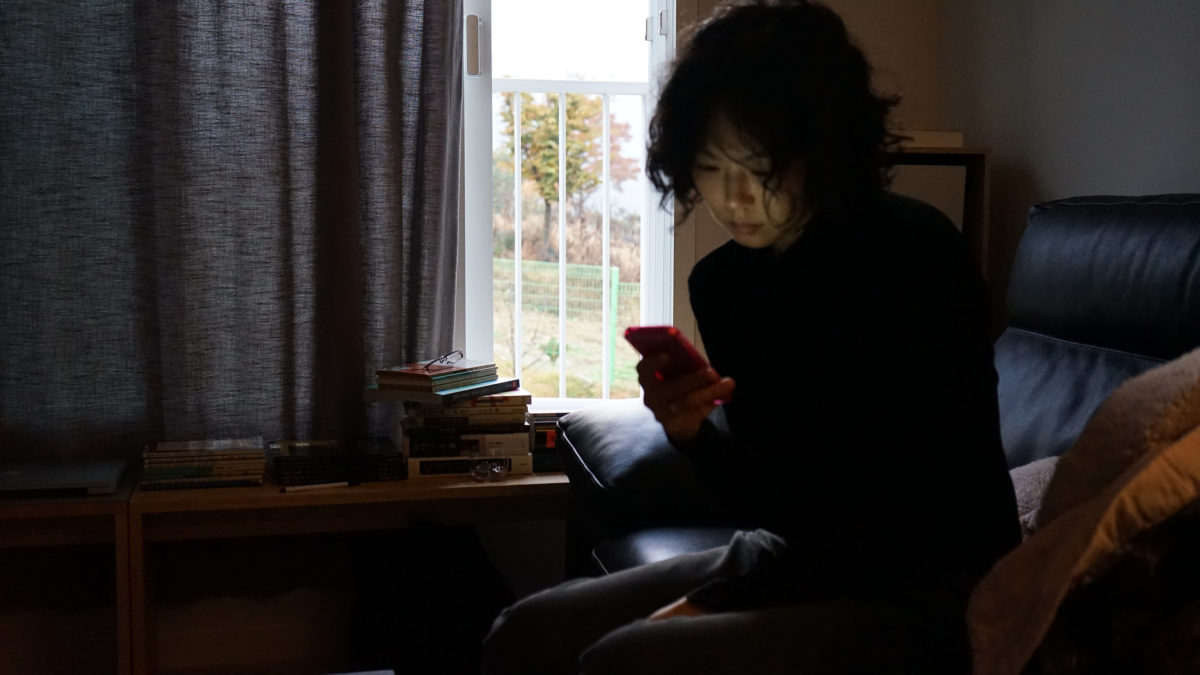
In 2018 Tom Paulus noted, “Like this most Rossellinian/Renoirian of the nouvelle vague cineastes [Paulus is referring to Rohmer], Hong likes the idea of quickly set-up production that, despite the beauty of the photography, gives the impression of having been ‘sketched’ rather than fully worked out (on Claire’s Camera, he shot for 9 days, finishing the final edit a day after the end of the shoot), leaving things to chance and remaining open to the sudden intrusion of natural contingencies into the totally artificial world of the work of art.”
Hong in 2020, at the film’s press conference: “Life, or being, always far surpasses any kind of generalization. The way I approach it, in terms of making a film, is that I try to push away all kinds of generalization […] I just open myself and believe that the things that come to be will be the right ones.” He further elaborates: “Something is given to me. Something is always given. I appreciate the given things instead of things I look out and look for with a certain intention or purpose.”
What seems to have been given to Hong are characters struggling to navigate their lives, without necessarily facing much of the struggle head-on; so too does the narrative reflect these ambiguities, particularly in one of the film’s greatest recurring gifts, its short yet significant silences. Hong makes us hear the silence via sheer contrast to an almost constant state of conversation, so that when the chatter does die down (or characters find themselves in moments of solitude), the absence of dialog heightens or attentiveness.
Twice Gam-hee is visual witness to mediated conversations she cannot hear; first watching Young-soon go out to talk to a smoking neighbor through a CCTV, and then again as Su-young confronts her ‘stalker poet’, through a doorbell camera. But apart from these silent interactions, there are myriad silences in isolation. Woo-jin smokes as she gazes at the mountains in the distance. Su-young looks up from her note-taking to her ringing phone, checks the name and ignores it. There are several instances of breaks in conversation due only to synchronized sipping. The most fragile and affecting silences happen while we focus on an isolated Gam-hee: at dawn, she opens the curtain, then the sliding glass door, sits back down on the couch, checks her phone, screen illuminating her face adjacent to the cool soft morning light of the window. Outside the rooster crows.
At film’s close, Gam-hee stares into the ocean of the cinema screen. It’s the second time she watches the film, and this time it’s in color—a different part of the same film, or an indication that she is watching it with new eyes? The static shot of an infinite, watery horizon may very well be a deliberate nod to Benning, as it would feel perfectly at home in many of his works, if not for the music. The music stops. We stare with Gam-hee and listen to the waves lap on a mini-peninsula jutting into the water. The credits roll and music starts again. It’s suggested that the music is diegetic, and belongs to the film she is watching, but (thanks in no small part to the lo-fi quality it shares with the film’s only other composition) it’s impossible to say for sure. Formalism has established its own reality, the circle complete, cinema screen imposed upon cinema screen. As I leave the screening, I’m not sure whose reality I’ve left and which one I’ve returned to. These worlds are still being built, an endless exercise in mindful presence.